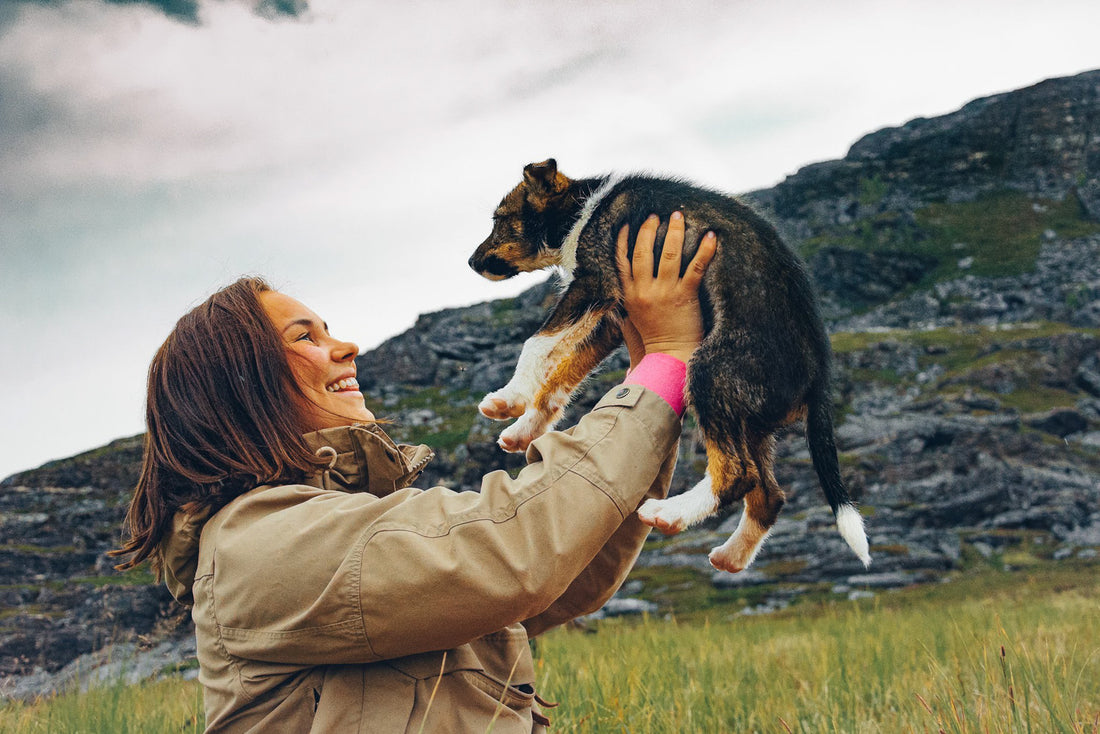
How to raise a confident puppy
Share
You bridge the gap between the familiar and the unfamiliar for your puppy. It is essential to keep this in mind to get a confident dog, according to musher Dallas Seavey.
- In the beginning, the human is the new thing in their environment. Puppies are used to their mother, their little dog house and their siblings. As a person, when we come into the pen, we are the new thing that is being introduced.
By being surrounded by the things they are familiar with, it helps bridge the gap with something new.
Big transition
Within the first weeks, the puppies get used to the human being in the pen, bringing the puppies with them in the house and petting them. At about five weeks of age, Dallas starts taking the puppies on little walks.
- I love this transition. Obviously, with a young puppy we are not going very far, but it is interesting to see where now the environment is what is new, and the human is the one familiar thing. This is the major transition where we are no longer the new thing in their life, and for the rest of their life, we are going to be the thing that helps bridge the gap between the familiar and the unfamiliar. We are going to help interpret the world for these dogs and help them understand every new thing they see, whether that is a blizzard in the mountain on the Iditarod trail or a presentation on a stage in front of 3.000 people. Whatever the environment change is, I am always the bridge, Dallas says in the first episode of our podcast, "Unleashed."
How to handle bad experiences
Ideally, every experience your puppy has with new environments, dogs, or situations should be a positive experience, but sometimes unexpected incidents happen. If your puppy gets unsure or scared, Dallas's advice is to stay calm.
- If you are in a bad situation or if something goes not how you planned – take control of it. Take a controlled landing rather than a crash landing. Try to find a way to regain control of the situation and find out: What is the best thing I can do for this dog right now? In ten seconds, ten days or over the next ten years?
A human problem or a dog problem?
Dallas also reminds us of the importance of trying to see problems and challenges from a dog's perspective - not a human perspective.
- Dogs will look at the same problem very differently. While we think we are solving the problem or think it shouldn't be a problem because we can cognitively understand, that is something the dog doesn't necessarily see. Think about if you are traveling with a dog anywhere – we are going to think logistically; are we going to catch the next flight, or do I have enough fuel to make it? Where are we going to spend the night? Those are not problems for your dog! All they know is they have been in the crate, and they really have to pee!
Sometimes the dog may not see any problem, but yet the human is all stressed out.
- Now they are starting to think, is the human or my leader of this pack irrational? Cause here they are, totally stressed over something that the dog sees as no problem.
Dallas Seavey grew up with dogs and currently has about a 100 at his kennel in Alaska. If you want to learn more about how the four-time Iditarod winner is teaching and training puppies and young dogs, Dallas is sharing his best tips in our podcast, "Unleashed."